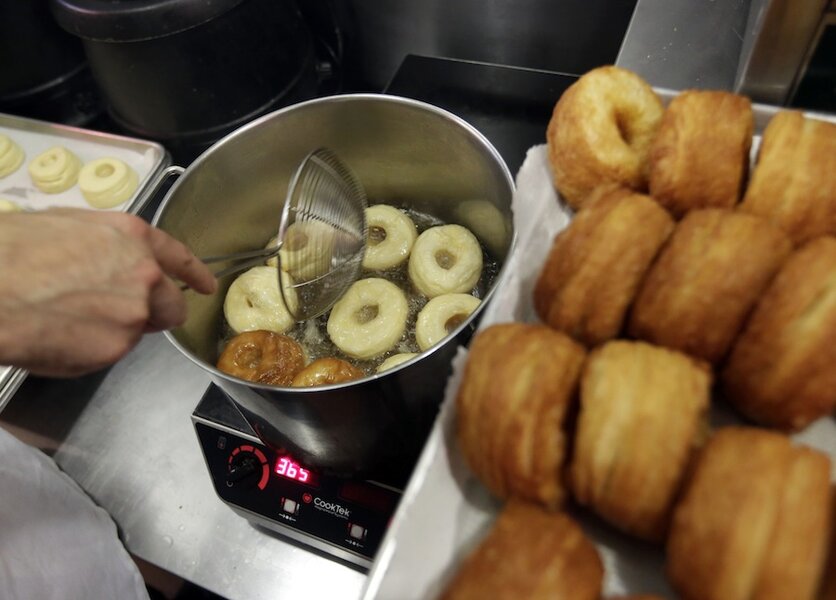Cronut recipe: The five most pretentious parts
Loading...
Unless you've visited the Dominique Ansel Bakery in New York City, you've probably not tried a Cronut. And based on the “at-home” recipe released by its creator, it’s likely you still won’t be trying the ganache-filled, fondant-glazed, croissant-doughnut crossbreed anytime soon.
Mr. Ansel, the French pastry chef credited with inventing the Cronut, toiled in his home kitchen for four months to whittle the trademarked brand Cronut recipe down to an allegedly more easily accessible “At-Home Cronut.”
The recipe is part of Ansel’s new cookbook, “Dominique Ansel: Secret Recipes,” which comes out later this month, but Good Morning America exclusively revealed it yesterday.
“It took quite a lot of work in my small New York home kitchen to work out a version of the Cronut recipe for an at-home cook,” Ansel told GMA.
Here’s the catch: This version still takes three days.
To his credit, Ansel offered this disclaimer: “The book has some much simpler recipes, but this is definitely a three-day challenge for the real serious bakers out there," he says of the recipe that GMA labels "Difficulty: Extreme."
"I hope they have fun with it and make it for someone special,” he added, apparently unaware that no sane person would spend three days making a doughnut just to hand it to someone else.
Don’t be fooled by the trendy flavors – tempting vanilla rose and seasonally appropriate pumpkin chai: This epic saga of a recipe reads more like a Cordon Bleu patisserie exam.
Pat yourself on the back if you take the time to even read through the entire recipe. If not, here are the five most pretentious parts:
- Deluxe prep gear: OK, so maybe you have a deep-frying thermometer. And maybe you have uncut piping bags. But you’ll also need a Wilton #230 Bismarck metal tip and the Ateco #803 plain tip. Shame on you if you thought your Ateco #804 would suffice. More shame if you thought you could cut the corner off of a Ziploc baggie.
- Polynesian ingredients: The vanilla rose ganache calls for rose water, and “1 Vanilla bean (preferably Tahitian), split lengthwise, seeds scraped.”
- No rest for the weary: After you finish splitting and scraping at that single Tahitian bean, don’t let your fingers rest because you’ve been soaking a gelatin sheet in ice water for 20 minutes and now it’s blooming and you must whisk the bloomed gelatin into heavy cream until dissolved.
- Regular sugar won't cut it: The single Tahitian vanilla bean makes another appearance in the ingredients for the "flavored" sugars, as does “grated zest from one orange” and “grated zest from one lemon.”
- Proof positive? Now you’ve been whisking ganaches for three days and before you can pipe fondant through your #803 plain tip, you’ve got to proof the dough. “It’s best to proof At-Home Cronut pastries in a warm, humid place,” Ansel instructs in the recipe. And before you find a warm, humid place in your home, it helps to know what proofing is. A quick Google search reveals this is a fancy term for letting your dough rise. Apparently the way yeast works in an At-Home Cronut is on a different level than a pizza crust.
After that you’ll be heating grapeseed oil in a large pot to 350 degrees and fervently checking it with your deep-frying thermometer because if it's too low, the pastries will be greasy; too high, the inside will be undercooked while the outside is burnt. So just fry those up, fill with ganache, pipe with fondant, and voila: an At-Home Cronut.
When did doughnuts get so fancy?





